Trekking the Cuchumatanes
There is a saying among well-traveled foreigners in Guatemala: Todo es posible aquí, y nada es seguro (All is possible here, and nothing is for certain).
The Maya people, of course, know all about uncertainty. As a novelist, I have recounted of some terrible events that happened throughout the Cuchumatanes Mountains during the 1980s, and often wondered if time would heal those scars. Last year, in March, I went to find out, joining six other tourists and two able Quetzaltrekker guides.
In Nebaj, the day before we started on the four-day trip, I asked old men in the plaza what they remembered of the war. Nebaj was where the young Perez Molina had commanded a military garrison. For whatever reason, no one wanted to talk about any of that, they were more interested in who I was, where I had come from.
My curiosity about their past felt out of place, so I decided not to push it. Besides, I’d lost my thyroid medicine, and at that point I was more concerned whether I could manage the strenuous hike.
We began early the next morning, a gentle ascent up the near western ridge. Two hours later we entered Acul, where in 1981 more than 100 people were tortured by the army, then murdered, before the entire village was burned to the ground.
A few elders passed by as our guide told the story. There was a quiet power in their presence, something I wanted to know about. I was disappointed that we needed to move on so soon.
Next came the famous cheese farm of Acul. It was like walking into Switzerland. Fat cows grazed in lime-colored pastures beneath heavily forested mountains. A pristine creek flowed nearby. The extreme beauty made it difficult to consider this place’s gruesome past, and I was grateful for the respite. I hoped that these once terrorized villagers felt the same, that nature had healed their damaged spirit and renewed their peace of mind.
From Acul it was a long upward slog on a twisted, dusty road. We saw a boy with his donkey-load of wood, a girl with her flock of sheep, and later came a man selling homemade ice-cream from the cardboard box on the back of his motorcycle. They were all quick to smile, possibly amused by the sight of these sweating, backpacking foreigners.
Around sunset we settled into the cantón of Xexocom, and were treated to a traditional chapín meal of beans and tamalitos; then to a rustic wet sauna: a temascal. My feet caked with mud, I walked to the old schoolhouse where we would sleep. The moon was full, the dense surrounding forest like a protective curtain, and I felt something change inside me—something difficult to explain—as if I were moving back in time with every step I took.
Rising at 3 a.m., we started up the nearly vertical mountain, thick with pine, madrone, oak and juniper. Our guide called it, “The hill of eighty-seven switchbacks.” At dawn we stopped to eat a simple breakfast while watching the sun rise over the ridges and valleys below. Then we finished the climb to the highest plain in the entire altiplano region.
It looked like an untouched planet. Ancient sunbaked boulders dotted the long narrow flat between its pine-laced rims, from which the mountaintop dove down on all sides. For many miles we hiked through gentle grasses interspersed with scratchy juniper bushes. It was absolutely quiet. Simply gorgeous. Goats and sheep ran away, their shepherds nowhere to be seen—a leftover habit, I supposed, from days when soldiers and guerillas maneuvered across this high valley taking anything they wanted. With good reason, these people and animals had learned to avoid strangers.
Late that afternoon we made the steep descent to a small cantón called Pajul País. It ended up a cold night, as nights often are in the Cuchumatanes, with a wet mist moving through the canyon, wrapping all around us.
The next morning we waddled, half-frozen, down a slippery path to the river below. In Pajul País I’d asked the river’s name, and was told “Río Pajul País.” On the other side, in the canton of Pericón, I asked again, and was given the same strange look by one of the men. He laughed and said (like what could be more obvious?) “Río Pericón.” That made me realize how far we’d come, to a place beyond modern maps, or anyone else’s sense of reality.
Truth was whatever these people experienced for themselves. Only that. I could not know, of course, how they were experiencing us. They smiled and waved, knowing we would soon be gone. For me, like the ubiquitous mountains and trees and corn and sheep, they were simply there, a natural part of the landscape. I could not imagine it without them.
That night we stayed in La Ventosa, where our guest, Don Gerónimo, shared the story about his uncle being tortured by the army during Ríos Montt’s reign. He thanked us for hearing him out. “What happened,” he said, “must be remembered, but few people are willing to listen.”
I spent much of the night thinking about that. Even for us, who had listened, it was striking how quickly the subject got dropped. I knew it was not some kind of human deficiency that inhibited us from dwelling on this man’s pain. It was, rather, our human resilience, our pragmatic good sense, the very thing that helps victims of any tragedy get beyond their traumatic memories. Common wisdom told us it was time to move on.
In the morning we climbed the famed La Torre peak, at almost 4,000 meters it is the highest non-volcanic point in Central America. We looked out over the Guatemalan Highlands. Though shivering in the gale-force winds, I felt safe. I did not have to worry about an army chasing me, or what might be happening to my family and friends in the village below. And, happily, neither did the people of La Ventosa. Things had changed, and they’d changed too.
We ended the trek in Todos Santos. When I first came, in 1976, it was a tiny village of thatched huts. Now it is a large bustling town, famous for colorful traje, a yearly horse race, and with many fancy houses. Still, though things were clearly more prosperous than before, the general poverty remained obvious. No way to miss it. Also, I decided, along with the people who live in Todos Santos, no reason to dwell on it.
The Cuchumatanes trek was an exquisite physical challenge. For me, as well, quite emotional. At first, I could not appreciate the beauty of those mountains without considering what had happened there. Finally, however, the steep terraced hillsides and soaring peaks felt less profound than the Maya people themselves.
They are a living truth, far greater than their tragic history. I remember, on our last day, walking through the Todos Santos market: men and women laughing; children playing in the street. What impressed me, above all, was that no matter how much suffering has occurred, and continues to occur, these people find ways, every day, to be happy.
REVUE article text and photos by David Mohrmann
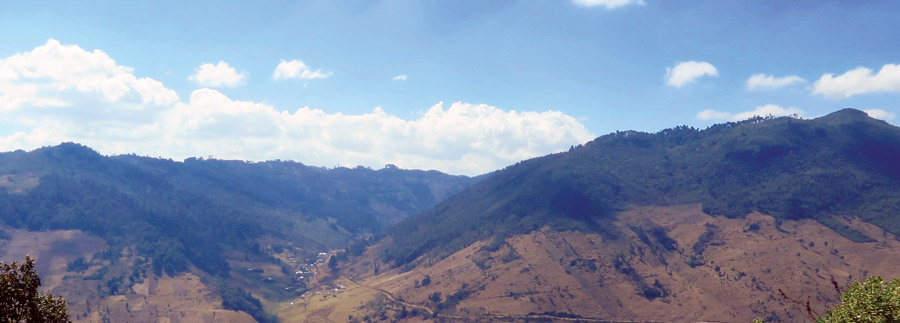
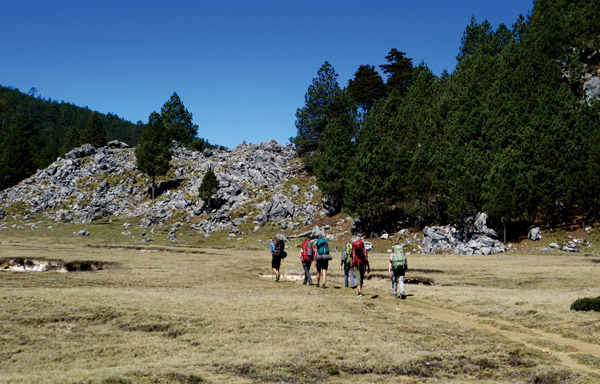
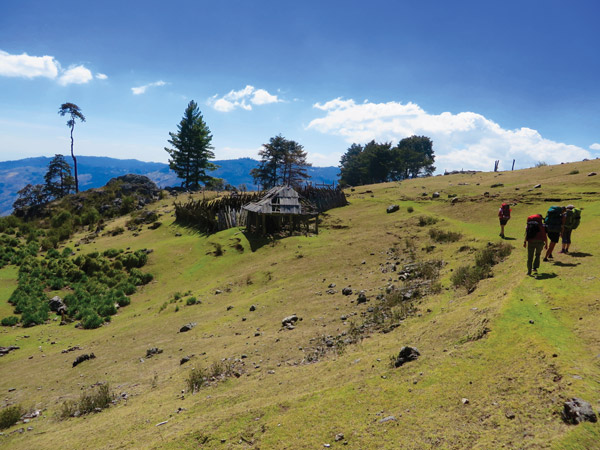
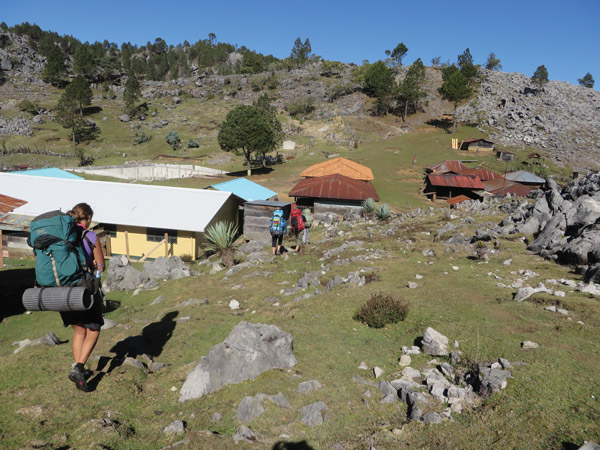
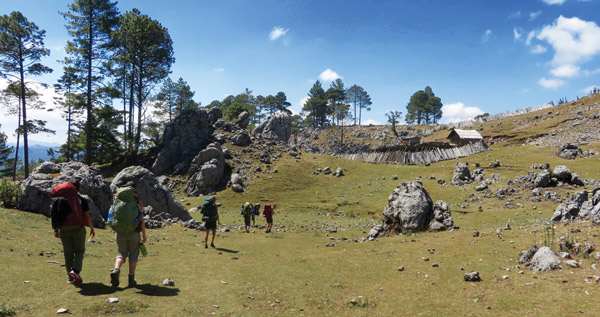
Beautiful article. And the last sentence is so true.
I enjoyed your article. sounds beautiful!
I am reading “Jungle of Stone” where amateur explorers and ruin hounds, John Stevens and Frederick Catherswood pass tgrough the Cuchumatanes on their way to Palenque in around 1840. I googled the area and found your wonderful article. You ought to read the book, it’s fascinating and well written. And sadly, the people of Guatamala were in the midst of a civil war then too. The Maya will persist though, I’m sure. Their culture seems to accept the world as a system that is made up of cycles and that in time things always change. I would love to go to the highlands, I’m glad that you got the chance.
You are right Deborah, Jungle of Stone is an excellent book — here is a alert we did on it a couple of years ago — http://www.revuemag.com/2016/05/13794/
Thanks for your thoughtful comment.